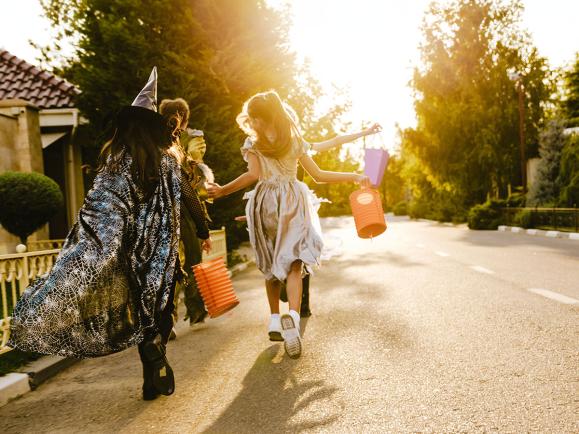
The time has come, again, for parents to share warnings among themselves via social media, advising each other to check their children’s Halloween hauls for hidden horrors like blades, needles and drugs.
But how worried should parents actually be about finding these things in their children’s candy, and is there something more sinister they should be protecting their children from while out trick-or-treating?
Car accident rates increase on Halloween
According to Safe Kids Worldwide, a nonprofit organization dedicated to preventing childhood injury and death, Halloween brings a more than double likelihood that children will be struck by a car and die than any other day of the year. And, per the National Highway Traffic Safety Administration, fatal car crashes increase by 13% on Halloween.
Mothers Against Drunk Driving (MADD) says that pedestrian deaths in car accidents increase by 43 percent on Halloween, with the highest risk posed to children between ages 4 and 8, who are 10 times more likely to die in a car crash. Of the crashes that occurred on Halloween, 39 percent involved drunk or impaired drivers.
As kids embark on their trick-or-treating adventures under the cover of darkness, there are a few ways that parents can help their children to be more mindful and safe on the streets, whether they live in the suburbs, the city or a small town.
These measures, from Safe Kids Worldwide include:
- Children should carry flashlights and/or glow sticks to make them more visible to drivers.
- Wear light colors, or carry something to differentiate from a costume’s dark colors.
- Parents should accompany children under 12 while they trick-or-treat.
- Trick-or-treaters must cross the street only at designated pedestrian crossings like corners and crosswalks, where possible.
- Paint kids’ faces instead of giving them masks to prevent impaired vision. Similarly, costumes should fit correctly so as to avoid tripping or the fabric catching on anything.
- Talk to kids about drunk driving and road safety so they understand the dangers that may lurk on the roads while they’re walking around in the dark.
Drivers should also take steps to avoid being involved in accidents. MADD outlines these measures:
- If you plan on drinking or engaging in drug use, plan ahead. Don’t drive drunk. Instead, plan to use a rideshare service or enlist a friend or family member to drive you to and fro.
- Be vigilant. Even if you aren’t impaired, the influx of people walking on the roads can catch the most watchful drivers off-guard. Look out for children crossing the road, in and out of crosswalks. They may not be wearing bright colors or be carrying lights/reflective gear.
- Parents should talk to their children about underage drinking and driving and encourage them to make safe choices no matter what.
Staying safe on Halloween in general
Aside from car accidents, parents should remain aware of potential risks to their children, which unfortunately include other people. For children going out without supervision, parents should advise that they stay in groups, avoid dark houses and alleyways and remain aware of the people around them.
For children with food allergies, parents must ensure their children don’t eat their candy before its ingredients can be checked, carry an epi-pen for more severe allergies, keep in contact with other parents to make them aware of a child’s allergies and not assume that familiar candies are safe to eat.
This article originally appeared in Deseret News.

